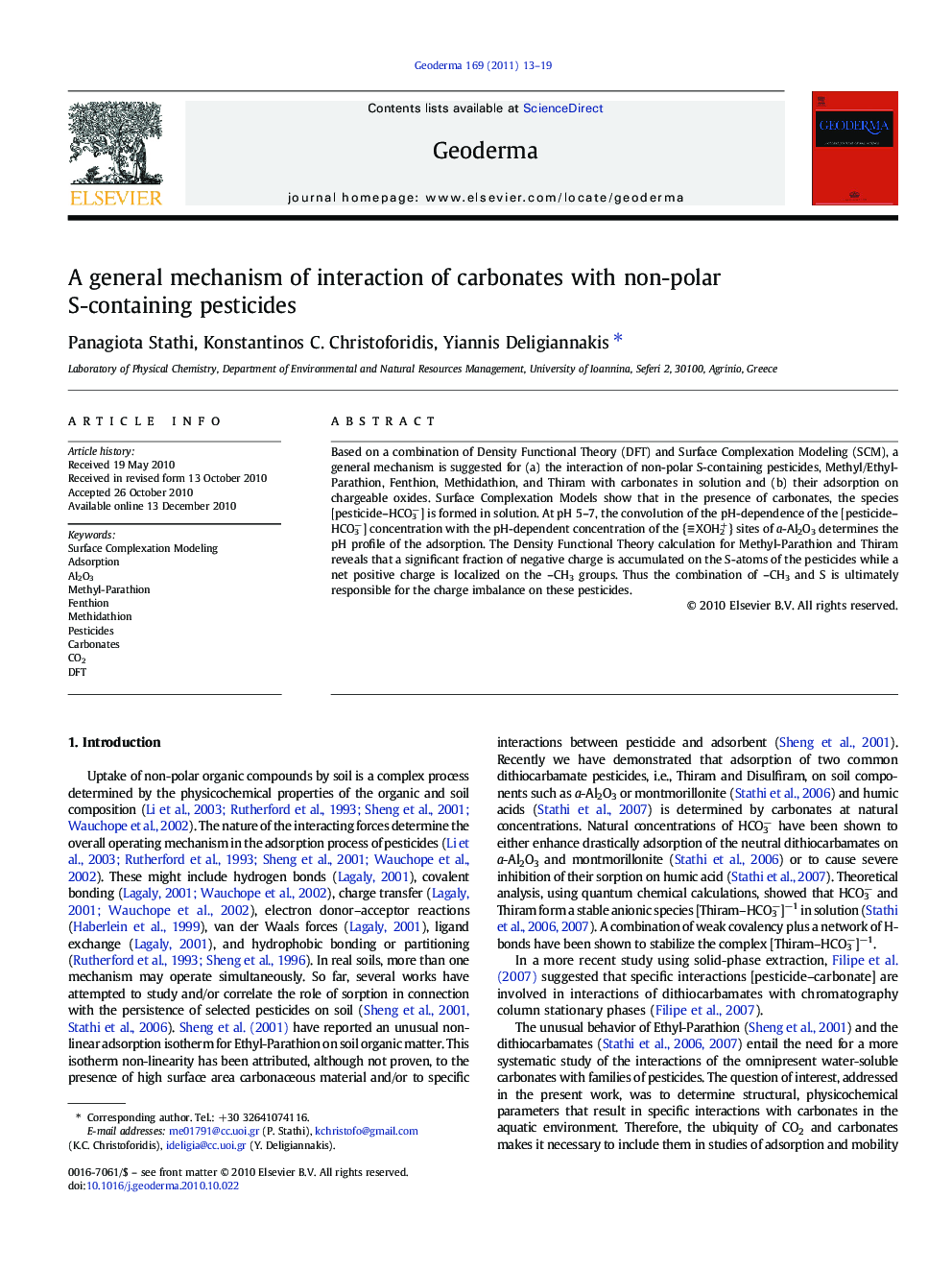| Article ID | Journal | Published Year | Pages | File Type |
|---|---|---|---|---|
| 4573997 | Geoderma | 2011 | 7 Pages |
Based on a combination of Density Functional Theory (DFT) and Surface Complexation Modeling (SCM), a general mechanism is suggested for (a) the interaction of non-polar S-containing pesticides, Methyl/Ethyl-Parathion, Fenthion, Methidathion, and Thiram with carbonates in solution and (b) their adsorption on chargeable oxides. Surface Complexation Models show that in the presence of carbonates, the species [pesticide–HCO3−] is formed in solution. At pH 5–7, the convolution of the pH-dependence of the [pesticide–HCO3−] concentration with the pH-dependent concentration of the {≡ XOH2+} sites of a-Al2O3 determines the pH profile of the adsorption. The Density Functional Theory calculation for Methyl-Parathion and Thiram reveals that a significant fraction of negative charge is accumulated on the S-atoms of the pesticides while a net positive charge is localized on the –CH3 groups. Thus the combination of –CH3 and S is ultimately responsible for the charge imbalance on these pesticides.
Research Highlights► Non-polar S-containing pesticides interact with carbonates in solution. ► DFT and SCM show stabilization of species [pesticide–HCO3−]. ► [pesticide–HCO3−] anions are adsorbed on the {≡ XOH2+} sites of a-Al2O3. ► The S-atoms of the pesticides accumulate negative charge. ► Positive charge is localized on the –CH3 groups of the pesticides.Graphical AbstractFigure optionsDownload full-size imageDownload as PowerPoint slide
